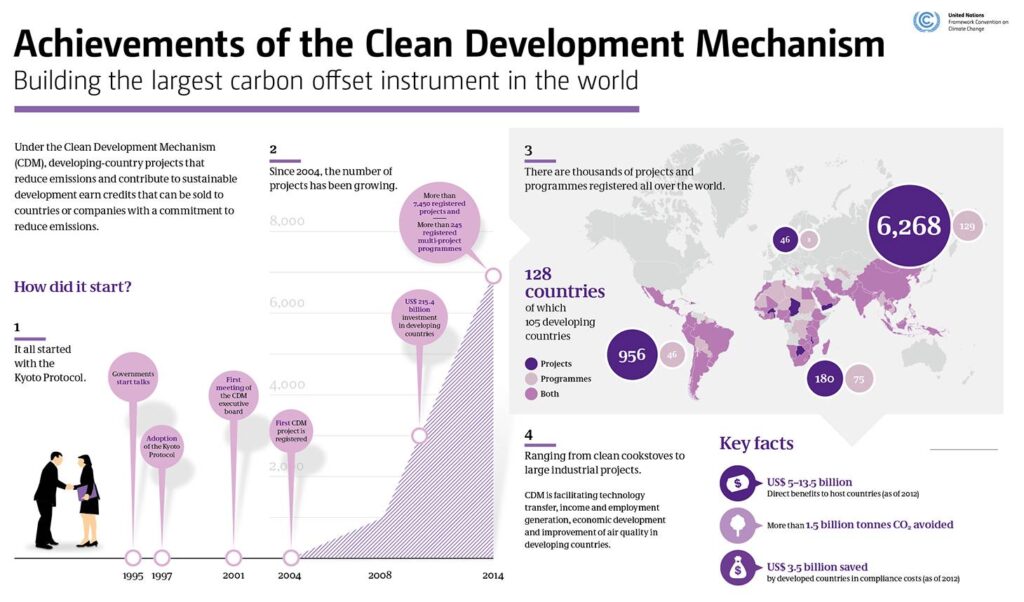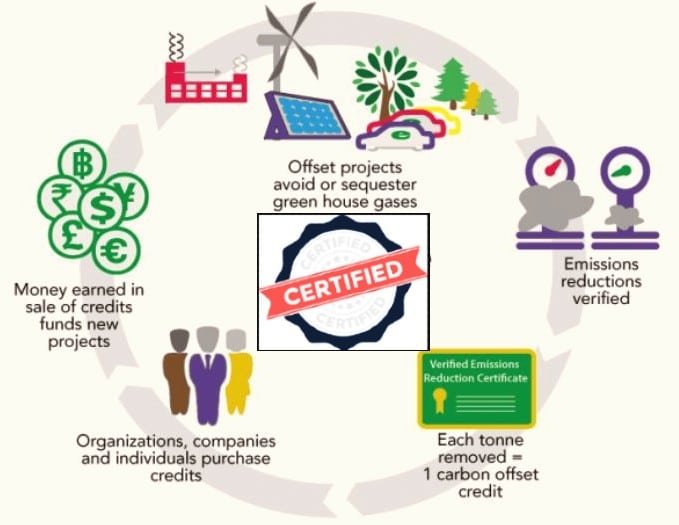Anybody can say that they’re offsetting their carbon footprint and get financial support for it, which is good. But here’s another version of the story – uncertified carbon credits can’t ensure that the offset project has actually reduced carbon emissions.
In other words, carbon credits that companies use to claim emission reductions must go through a recognized carbon credit certification process. But the question is – who certifies carbon credits?
You’ll know the most renowned companies or standards that certify carbon credits, plus the processes involved in this article.
Who Certifies Carbon Credits?
Carbon credit certification can be done only by accredited organizations and both types of carbon markets – compliance and voluntary – have their own standards to adhere to. These standards are aided by independent verification bodies to ensure that carbon reduction projects follow their strict rules in offsetting.
Given the various carbon credit certification companies and their protocols, it could be quite confusing and you might be thinking why not have one global standard only. We do hope, too, but since that’s not yet the case, here are the names you should be aware of.
Let’s break it down according to market type, starting with the voluntary carbon market (VCM).
-
Verified Carbon Standard (VCS) by Verra
The VCS Program developed by Verra is the most widely adopted carbon credit certification program. This program allows certified offset projects to turn their emission reductions or removals into carbon credits.
To date, Verra has more than 1,800 certified VCS projects that collectively reduced or removed over 920 million tons of GHG emissions. The VCS program focuses on GHG reduction attributes only and doesn’t require projects to have additional environmental or social benefits.
The VCS Certification Process
-
Gold Standard (GS)
The Gold Standard is a voluntary carbon credit certification program unique from others. Unlike Verra, it puts the UN Sustainable Development Goals (SDGs) at the center when certifying offset projects. The crediting program was a collaboration among the World Wildlife Fund (WWF), HELIO International, and SouthSouthNorth.
It focuses on projects that provide lasting social, economic, and environmental benefits such as below. It also applies to both voluntary offset projects and to Clean Development Mechanism (CDM) projects.
-
Climate Action Reserve (CAR)
The Climate Action Reserve is a certification body or registry for the North American carbon credit market. It aims to encourage companies and other organizations to measure, manage and reduce GHG emissions while ensuring the environmental integrity of emission reduction projects.
While headquartered in the United States, CAR also certifies projects in Canada and Mexico. All carbon credits generated by CAR-certified projects are given a unique serial number which helps track each project effectively.
-
American Carbon Standard (ACR)
The American Carbon Standard is a pioneer on the voluntary emissions and carbon market in California. It was founded back in 1996 as the first GHG registry and was approved as an Offset Project Registry by the California Air Resources Board (CARB). It’s the regulatory body of the California cap-and-trade offset credit market.
Let’s move on to the mandatory or compliance carbon credit market.
-
Clean Development Mechanism (CDM)
The United Nations’ Clean Development Mechanism is considered by many as a trailblazer in carbon credit certification.
It’s a program under the Kyoto Protocol that allows a country to implement carbon emission reduction projects in other countries and claim the reduced emissions toward its own emission targets. The funded projects can earn tradable certified emission reduction (CER) credits, each equal to one tonne of CO2.

-
The Kyoto Protocol
The Kyoto Protocol operationalizes the United Nations Framework Convention on Climate Change (UNFCCC) and makes regulated carbon credits trading possible. It creates the standards for which the credits from a CDM project becomes certified and tradable within the compliance market.
While voluntary credits are independent of government regulations under the Protocol, they can also be certified using the same standards, as long as a company’s corporate social responsibility is reflected.
So, how do those organizations certify carbon credits?
Carbon Credit Certification: How Does It Work?
The ultimate goal of carbon credits is to reduce the amount of carbon emitted into the atmosphere. Each carbon credit certification gives the owner the right to emit one ton of carbon dioxide or other greenhouse gasses.
A carbon offset credit becomes certified only by going through the specified processes or procedures set by the certifying standard. This is what separates a high-quality and real carbon credit from other credits swarming the market.

The credits don’t just reduce emissions; the extra revenue they generate help improve the life of local communities, create more jobs, and provide economic stability.
They’re traceable, which means their environmental benefits can be claimed only once. This is critical to ensure that they’re counted only once toward carbon reduction goals. As such, certifying them is vital so as not to jeopardize the purpose of why they’re created in the first place.
So, how do those organizations certify carbon credits?
Carbon Credit Certification Process: Getting Started
Let’s get down to the major steps involved and walk you through it.
- Project Planning. Same with other projects, as a carbon offset developer, you must estimate the climate impact of your project by planning. Then you should assess it against the standards of the carbon credit certification body.
- Get Project Approval. With all the estimates and assessments, your project is now ready for the first review by the certification organization. If all is well with your plans, you’ll get the green light.
- Third-Party Project Validation. This time, the carbon credit certification company, e.g. Verra or CDM, will perform an independent assessment of your project. This may include a site visit to validate that your project satisfies their certification standards.
- Final Review and Approval. After a successful validation, your project will now be ready for certification and be issued with certified carbon credits. You can then sell these credits via a carbon registry or use it to offset your own emissions.
- Project Monitoring. But of course, after getting your carbon credits certified, it doesn’t end there. You need to implement the monitoring plan you designed during project planning. With that, you have to submit monitoring project reports to the carbon credit certification body. This is crucial to ensure that the credits you sell did the job of reducing or removing emissions.
Plus, there will be another validation and verification every 5 years to independently assess your project impact. This is also important to see that your project works in line with the certification standard.
In the complex realm of carbon credit certification, the narrative shifts from mere claims to tangible impact of driving genuine emissions reduction – uncertified credits offer no assurance of actual environmental progress. Acknowledging this distinction, the certifying organizations mentioned earlier play a pivotal role in the credibility of carbon offset projects.



